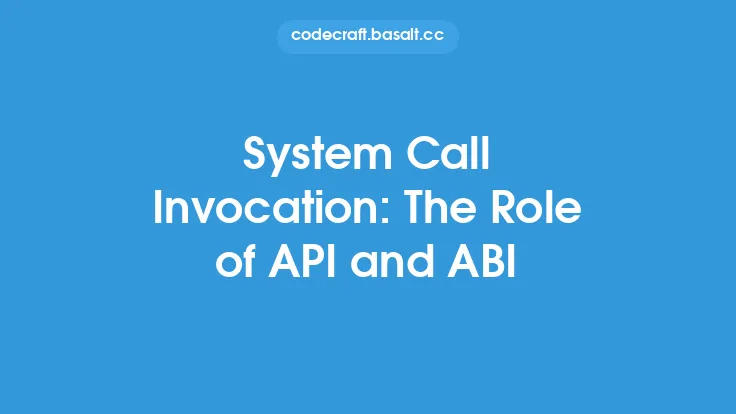When it comes to creating a successful API, one crucial aspect that is often overlooked is the documentation. API documentation is the backbone of any API, as it provides the necessary information for developers to understand how to use the API, its capabilities, and its limitations. Well-written documentation can make all the difference in the adoption and usage of an API, while poorly written documentation can lead to frustration, confusion, and ultimately, a lack of adoption.
Introduction to API Documentation
API documentation is a comprehensive guide that outlines the functionality, usage, and behavior of an API. It is typically written for developers who will be using the API to build applications, and its primary goal is to provide clear, concise, and accurate information about the API. Good API documentation should cover various aspects, including the API's endpoints, request and response formats, error handling, authentication mechanisms, and any other relevant details.
Benefits of Good API Documentation
Good API documentation offers numerous benefits, both for the API provider and the developers using the API. Some of the key benefits include:
- Improved adoption rates: Clear and concise documentation makes it easier for developers to understand and use the API, leading to increased adoption rates.
- Reduced support queries: Comprehensive documentation can reduce the number of support queries, as developers can find the answers to their questions in the documentation.
- Faster development: Good documentation enables developers to quickly understand the API and start building applications, reducing the overall development time.
- Better error handling: Clear documentation of error handling mechanisms helps developers to handle errors effectively, reducing the likelihood of errors and improving the overall user experience.
Best Practices for Writing API Documentation
Writing effective API documentation requires a structured approach. Here are some best practices to keep in mind:
- Use clear and concise language: Avoid using technical jargon or complex terminology that may confuse developers.
- Use standard formatting: Use standard formatting conventions, such as API Blueprint or Swagger, to make the documentation easy to read and understand.
- Include code examples: Provide code examples in various programming languages to demonstrate how to use the API.
- Document error handling: Clearly document error handling mechanisms, including error codes, messages, and examples.
- Keep it up-to-date: Regularly update the documentation to reflect changes to the API, new features, or bug fixes.
API Documentation Tools and Technologies
There are various tools and technologies available to help create and manage API documentation. Some popular options include:
- Swagger: An open-source framework for building RESTful APIs, which includes tools for generating documentation.
- API Blueprint: A markdown-based format for documenting APIs, which can be used to generate documentation and client code.
- Dox: A documentation generator for APIs, which can be used to create documentation from code comments.
- Read the Docs: A platform for hosting and managing documentation, which includes features such as versioning and search.
Structuring API Documentation
A well-structured API documentation is essential for making it easy to use and understand. Here are some tips for structuring API documentation:
- Use a clear and consistent layout: Use a standard layout throughout the documentation, including headings, subheadings, and code examples.
- Organize by endpoint: Organize the documentation by endpoint, including information about request and response formats, parameters, and error handling.
- Include an overview: Provide an overview of the API, including its purpose, functionality, and any relevant background information.
- Use tables and diagrams: Use tables and diagrams to illustrate complex information, such as data formats or workflow diagrams.
Common API Documentation Mistakes
There are several common mistakes that can make API documentation ineffective. Some of these mistakes include:
- Outdated information: Failing to update the documentation to reflect changes to the API can lead to confusion and frustration.
- Lack of clarity: Using complex terminology or unclear language can make the documentation difficult to understand.
- Insufficient examples: Failing to provide sufficient code examples or use cases can make it difficult for developers to understand how to use the API.
- Poor organization: Failing to organize the documentation in a clear and consistent manner can make it difficult to find the necessary information.
Conclusion
API documentation is a critical aspect of API design, and its importance cannot be overstated. By following best practices, using the right tools and technologies, and structuring the documentation in a clear and consistent manner, API providers can create effective and informative documentation that makes it easy for developers to use the API. Remember, good API documentation is an ongoing process that requires regular updates and maintenance to ensure that it remains accurate, complete, and relevant. By investing in good API documentation, API providers can improve adoption rates, reduce support queries, and ultimately, create a better experience for developers using the API.





